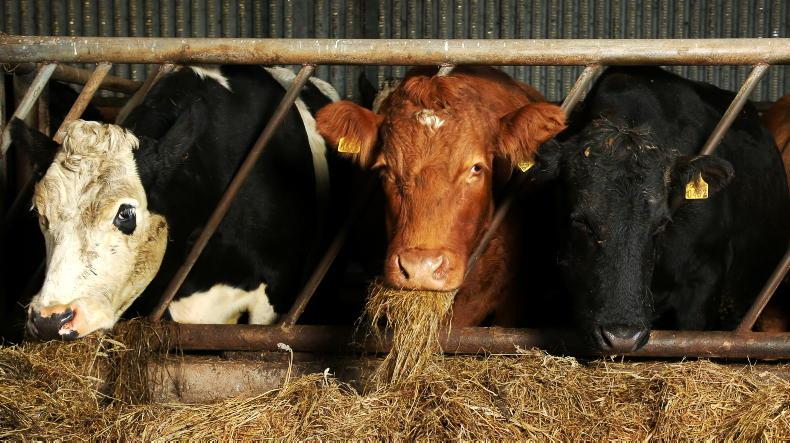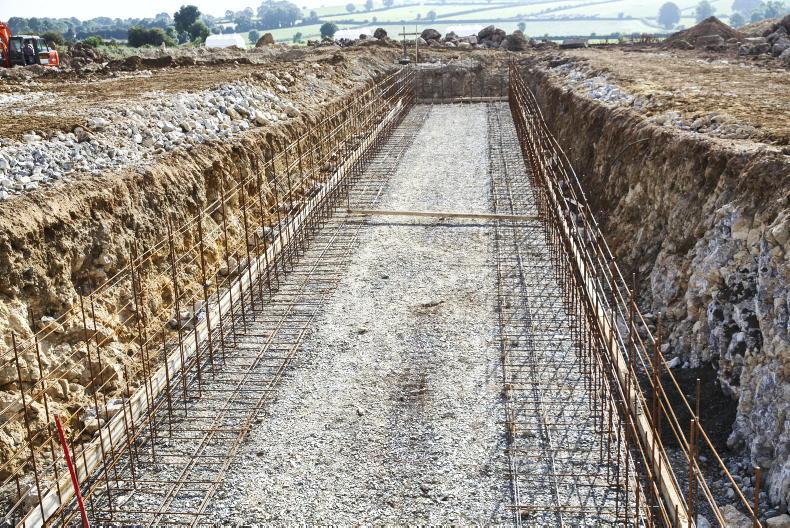As cattle are housed, there are certain management tasks to carry out once animals have settled in the shed. Outlined are five such jobs to consider.
1 Pregnancy scanning spring-calving cows
With cattle back in the yard, it is a good time to pregnancy scan cows, if this job has not already been done.
Scanning will identify which animals are empty and can be off-loaded. At the cost of inputs, there is no scope to run empty cows over the winter.
Empty cows should also be in good body condition coming off grass. These animals could be sold straight away, with a calf at foot or finished over a short period.
2 Group cows based on scanning info
Ideally, pen cows based on predicted calving dates to simplify feed management over winter. There is no point having January/February-calving cows in the same pen as a few April-calving animals. This step also makes it easier to watch cows springing up as they get closer to calving.
3 Body condition scoring
When scanning cows, make a quick note of body condition. Most cows should be in good condition coming off grass.
But there will always be a few animals on the thin side, such as first-calved heifers, cows suckling twins or older cows with a strong dairy influence.
Handle cows along the rib, hook and pin bones, as well as the tail head. If some cows are on the thin side, pen them separately, wean early and give ad-lib access to the best silage on-farm.
As a rule of thumb, moving from a condition of 2.5 to the ideal 3.5 for a spring-calving cows is the equivalent of gaining 10% of mature cow weight, or 70kg to 80kg of liveweight.
This can take 10 to 12 weeks, depending on silage quality. The time to alter body condition is now, as these cows will be back on track for ideal condition by the end of the year.
Cows on the fat side can be penned separately and have silage intakes restricted, provided there is sufficient room to let all animals access the feed face at the same time.
4 Clipping cattle
Clipping weanlings, stores and finishing cattle along the back, neck and head will help animals regulate body temperature in the shed, reducing the risk of pneumonia problems.
It may also be worthwhile clipping the tails of cows, helping to keep animals cleaner around the hindquarters and udder.
5 Parasite control
If there are multiple cattle groups on-farm with different management priorities, then parasite control has to be tailored to suit certain batches.
For example, with autumn-calving cows and finishing animals, fluke and worms can impair performance by reducing weight gain, milk production and fertility.
Target these animals with a fluke product that kills the parasite at the early immature stage. This means dosing can be carried out within two to three weeks of housing.
Some products are more effective at killing mature fluke, which means delaying dosing until seven to eight weeks after housing.
This is too late for finishing cattle, but it may be more practical for farmers running dry spring-calving cows all winter and stores that will go back to grass.
Read more
Editorial: will 2023 return record beef prices or record losses?
Farmers advised to act now to secure 20% of fertiliser needs
As cattle are housed, there are certain management tasks to carry out once animals have settled in the shed. Outlined are five such jobs to consider.
1 Pregnancy scanning spring-calving cows
With cattle back in the yard, it is a good time to pregnancy scan cows, if this job has not already been done.
Scanning will identify which animals are empty and can be off-loaded. At the cost of inputs, there is no scope to run empty cows over the winter.
Empty cows should also be in good body condition coming off grass. These animals could be sold straight away, with a calf at foot or finished over a short period.
2 Group cows based on scanning info
Ideally, pen cows based on predicted calving dates to simplify feed management over winter. There is no point having January/February-calving cows in the same pen as a few April-calving animals. This step also makes it easier to watch cows springing up as they get closer to calving.
3 Body condition scoring
When scanning cows, make a quick note of body condition. Most cows should be in good condition coming off grass.
But there will always be a few animals on the thin side, such as first-calved heifers, cows suckling twins or older cows with a strong dairy influence.
Handle cows along the rib, hook and pin bones, as well as the tail head. If some cows are on the thin side, pen them separately, wean early and give ad-lib access to the best silage on-farm.
As a rule of thumb, moving from a condition of 2.5 to the ideal 3.5 for a spring-calving cows is the equivalent of gaining 10% of mature cow weight, or 70kg to 80kg of liveweight.
This can take 10 to 12 weeks, depending on silage quality. The time to alter body condition is now, as these cows will be back on track for ideal condition by the end of the year.
Cows on the fat side can be penned separately and have silage intakes restricted, provided there is sufficient room to let all animals access the feed face at the same time.
4 Clipping cattle
Clipping weanlings, stores and finishing cattle along the back, neck and head will help animals regulate body temperature in the shed, reducing the risk of pneumonia problems.
It may also be worthwhile clipping the tails of cows, helping to keep animals cleaner around the hindquarters and udder.
5 Parasite control
If there are multiple cattle groups on-farm with different management priorities, then parasite control has to be tailored to suit certain batches.
For example, with autumn-calving cows and finishing animals, fluke and worms can impair performance by reducing weight gain, milk production and fertility.
Target these animals with a fluke product that kills the parasite at the early immature stage. This means dosing can be carried out within two to three weeks of housing.
Some products are more effective at killing mature fluke, which means delaying dosing until seven to eight weeks after housing.
This is too late for finishing cattle, but it may be more practical for farmers running dry spring-calving cows all winter and stores that will go back to grass.
Read more
Editorial: will 2023 return record beef prices or record losses?
Farmers advised to act now to secure 20% of fertiliser needs










SHARING OPTIONS